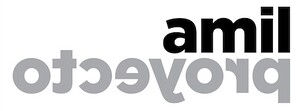TORNAR(se)
The Collaborative Laboratory of Contemporary Art in Lima
April 4–July 27, 2024
Av. Pedro de Osma 409, Barranco
15063 Lima
Peru
Hours: Wednesday–Saturday 3–8pm
info@proyectoamil.org
“We are thrilled to announce that we are moving to a new space and will celebrate with the opening of the exhibition resulting from the collaborative contemporary art laboratory Haciento Contexto VII (Making Context).
The exhibition, conceived by artists Martin Gustavsson and Rodrigo Gómez Olivos in collaboration with proyectoamil, presents the works of artists Jean Bahamondes, Viviana Balcázar, Nicole Echeverría, Piero Figueroa, and José Carlos Flores in our new space in Barranco.
In the realm of art, there is a trend to search for the human or animal essence within objects or formations and subsequently transform them into sculptures or paintings. TORNAR(se) is the title of the 2024 edition of the laboratory and proposes shedding light on the question of what animated objects represent in the context of contemporary Peruvian art. Undergoing a transformation or simply changing direction can mark a crucial moment in a person’s life. It can manifest as an act of self-defense, a form of protest, or a demonstration of activism. It can also signify a spiritual awakening or an internal psychological change. Approaching this theme from a feminist perspective, the metaphor of turning into stone could symbolize a plea for defense against oppression.
To celebrate this special night, live acts Prado and Necrosante, as well as DJs EEEVEE and Sixta, will accompany us.”
The first edition of Haciendo Contexto was organized in 2016. From the outset, the program was conceived as an experimental pedagogical situation—aimed at both art students and professional and self-taught artists—through an open call.
With a methodology based on the principle of “learning by doing” and using the space of proyectoamil as its headquarters, throughout its different editions, Haciendo Contexto has emphasized the coexistence among its participants and the collective production of contemporary art. Thus, during the month and a half duration of the laboratory, the aim is to generate a stimulating work environment for the selected artists, combining work critiques; visits to museums and exhibitions; interviews with curators and professional artists; and a final presentation open to the public of the team’s work.
Haciendo Contexto is a unique initiative in Lima, a city where specialization programs in contemporary art are nonexistent and where artists who can access international platforms that provide professional legitimacy—such as residencies, master’s degrees, doctorates, etc.—constitute a minority. Instead of reproducing this alienating and ultimately exclusive logic, the collaborative contemporary art laboratory’s bet has been to “put down roots” in our city, generating a space where emerging or underrepresented artists can engage in meaningful exchanges, push the boundaries of their work, and present new works to the local artistic community.
The thematic axis of Haciendo Contexto has varied from year to year. The first edition revolved around collaboration as a form of artistic production. However, gradually Gustavsson and Gómez Olivos have refined their interests, proposing as case studies themes deeply rooted in the country’s history, but always from a contemporary perspective.




